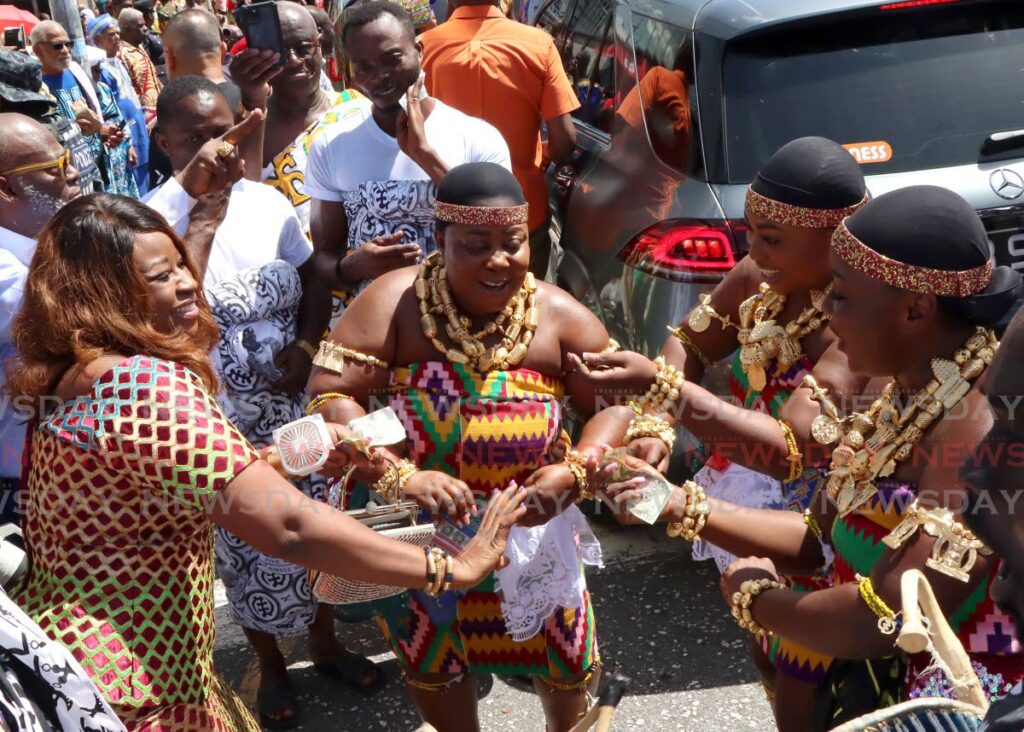Prelude to full emancipation in Tobago

Dr Rita Pemberton
THE 19TH CENTURY ushered an era of challenge for Caribbean plantation owners who were perplexed by the series of events which unfolded from the very start of the new century. The century began with the explosion of the Haitian rebellion which spanned the years 1791 to 1804, ended with the enslaved liberating themselves, establishing black rule in Haiti and in the process threatening the collapse of the slave system in the region.
This resistance movement sent both shock waves and contradictory messages across the region. To the enslaved the Haitian revolt was a source of inspiration to continue their fight against the hated system of enslavement, but to the planting community, which was gripped with fear, it stimulated a determined effort to prevent it from serving as a model for the enslaved in other territories to follow.
Consequently, the 1802 conspiracy in Tobago, which was uncovered before the rebellion occurred, was harshly stamped out of existence. In order to send a firm no-tolerance message to the rest of the island’s enslaved population, the plotters were brutally punished and hanged in public.
The 1816 outbreak of Bussa’s rebellion in Barbados increased the unease of enslavers and their desperate efforts to stamp out rebellion by terrifying the enslaved population into conformity with savage public displays, but the resistance was a reflection of the heights of intolerance with plantation slavery that motivated the enslaved population to increase their efforts to terminate enslavement.
The decade before the passing of the Emancipation Act in the British Parliament was a period of anxiety for the planting community in the British Caribbean. There were instances of heightened resistance movements across the region as enslaved Africans demonstrated their determination to attain freedom.
These resistance movements were costly to the planting community who saw them as the realisation of their long-held fears of economic and social collapse. The 1823 Demerara revolt, which was followed by the Christmas Rebellion in Jamaica in 1831/32, panicked the planting community who also had to face the reality that there were other opposition forces with which they had to deal.
At the same time came the realisation that despite their efforts to undermine the anti-slavery movement it was gaining support in Britain, both from those of moral and religious persuasions and, most importantly, from the new economic interests which sought liberation from the strangulation of the mercantile laws which chained them to colonial trade.
The free traders and their supporters wanted open markets in areas where the buying communities would demand and could afford to purchase the items produced by industrialised Britain.
For the Tobago planters, the outlook was particularly grim for the island had long lost its reputation as a generator of wealth since the island’s sugar industry had plummeted to an all-time low. Many plantation owners were unable to meet their expenses, and an increasing number of the island’s estates were up for sale.
Blaming the enslaved for their predicament, the planters grumbled their way through the difficulties with a determination to defy the Emancipation Act and establish a system which served their interests. This became evident in the message conveyed in Lt Governor Henry Darling's proclamation of July 25, 1834 on the termination of slavery in Tobago and explaining how the new system would operate.
The lieutenant governor introduced the contradictory policy of an apprenticeship system which was not the freedom the enslaved population expected and which was considered a confusing imposition.
He told them that they continued to have obligations to their former masters for it was their responsibility to pay them by their labour the value of what their owners would have lost had immediate emancipation been granted. In other words, apprenticeship was intended to be a part of the compensation package to slave owners, the cost of which was the burden of the enslaved.
Darling indicated that disobedience of the laws would not be tolerated and he would strongly support the magistrates in their effort to punish those who disobeyed the law.
It was striking how labour featured as a part of the legal system where it was described either as hard labour or additional labour and was integrated as a part of punishment for apprentices who were brought before the magistrates for a range of offences.
These included: neglect of cultivation of the provision ground, indolence, careless work, damage to estate property, absence from work, running away, organising riots or disturbances, or making frivolous or malicious complaints against planters. The labour requirements were usually made in addition to other forms of punishment: whipping with the army instrument the cat-o'-nine-tails or on the treadmill.
The message stressed obedience and unfreedom as the fundamental rules of operation for the apprentices, who were not permitted to live beyond the confines of the estate without the permission of the masters, could not leave the island, rear animals without the consent of the master or hold arms.
To prevent any movement away from estate labour, it was made difficult for Africans to enter other fields of employment, even those which were considered essential. At the time there was a need for labourers and porters in the towns of Scarborough and Plymouth and in the bays around the island, but such jobs required applicants to obtain a licence from a magistrate.
To obtain such licences the applicant had to produce recommendations from two reputable inhabitants (ie, white) supporting their good character and fitness for that job. If such an applicant was an apprentice, permission of the master was essential.
The cost of a licence was four shillings and the wage for these jobs was set at one shilling and four pence so that they would not compete with estate labour. Refusal to accept the rates that were offered earned the offender a charge of ten shillings, in default of which they were liable to up to 15 days jail with the customary labour requirement.
The apprenticeship system, which was justified as a system to prepare the apprentices for freedom, was in fact a system that was intended to maintain the traditional operation of plantations. The emphasis on the issue of labour in the Tobago context reflected the peculiar position of the island’s plantation system at that time. It was also an indication of how labour featured as an issue of major concern to the island’s administration and would dominate Tobago’s post-emancipation history right up to the end of the 19th century.


Comments
"Prelude to full emancipation in Tobago"